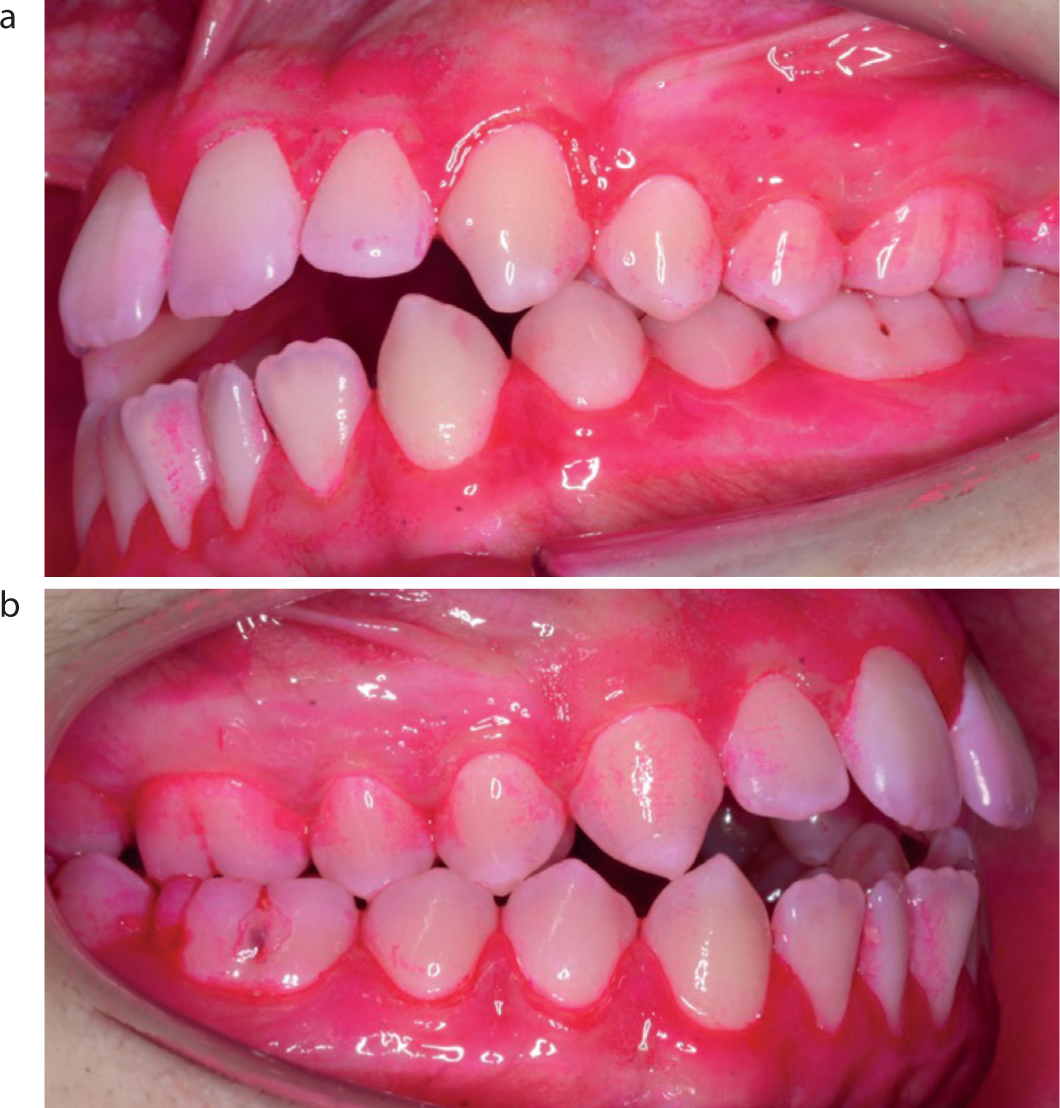Article

In this very troubled world, it is sometimes difficult to decide what we should be getting aerated about and what we should just let go. Personally, oral hygiene is the hill I am willing to die on. Having recently referred a patient back to their dentist because of inadequate oral hygiene, I received a letter from said general dental practitioner yesterday telling me that ‘the patient's oral hygiene was good’ having seen the hygienist 2 weeks previously.
I therefore went to the patients Dolphin file, which had high-quality photographs from the last visit, where I had disclosed the patient personally, and clearly demonstrated plaque covering the embrasures, some of the gingival margins and even the labial surfaces of many teeth (Figure 1). These were taken on a day the patient was coming back to see me, purely for a re-assessment of their previously inadequate oral hygiene, and presumably they were trying to impress me with their level of toothbrushing, following the ‘frank and forthright’ discussion we'd had at the previous visit. How then is it possible that the dentist thinks this patient's oral hygiene is good? In what universe is that a helpful message to give to patients, or indeed their parents? There is clearly room for improvement, which is a necessity if we are going to be able to guarantee doing more good than harm with our orthodontic ministrations.

Although it is tempting, and indeed, I could be justified, to send the general dental practitioner these photos with a subject line of ‘Specsavers’, I can acknowledge that it perhaps wouldn't elicit the response I would be hoping for, and we must, of course, try to maintain good relations with our GDP colleagues. So then, what is it that the GDPs can't see, and why is the general acceptance of ineffective oral hygiene at such a pitifully low level among our dental colleagues? Perhaps they are acting under the misguided impression that they are ‘being kind’ to the patients by giving them this erroneous message. Nothing could be further from the truth! Surely the duty of care of all professionals is to ensure that the benefits outweigh the potential harm for the patient?
In Chesterfield, we distribute the BOS patient information leaflets on oral hygiene, toothbrushing, gingivitis and disclosing tablet use at the initial consultation, and we also run dental health education clinics that are offered to each and every potential patient. Our oral health educator will see patients for a minimum of two visits to endeavour to reduce a potential patient's plaque score down to 10% or lower. This should ensure a clean oral environment in which it is easy to work, and it is a demonstration of a patient's commitment to treatment. Plaque scores are objectively measured and documented in the notes. I explain to patients and their parents that ‘if they are able and willing to clean their teeth and gums to an exemplary standard’, we will be delighted to straighten their teeth … and vice versa. If they fail to achieve this standard, they will be discharged back to their dentist, until this high level of cleaning is achieved, and they can be re-referred for further objective assessment.
I almost never tell a patient that their oral hygiene is good, because I believe it to be an extraordinarily counter-productive message. If the teeth and gums are clean, and there is no gingival inflammation anywhere in the patient's mouth, they are congratulated for having oral hygiene ‘adequate’ for the provision of braces. ‘Less than adequate’ or ‘poor’ is by far the most frequent clinical assessment documented on the initial visit. In my opinion, our dental colleagues need to be calibrated to the same ideal level of oral hygiene assessment. If they really want to ‘be kind’ to their patients, they must tell both the patients and their parents the ‘hard truth’, in the hope that they are preparing them well to reap all the many benefits that a quality course of orthodontics can offer in an efficient and effective manner.
All I would therefore ask of our hard-working GDP colleagues is for them to give us at least a fighting chance to stay on side with their patients. Instead of saying their oral hygiene is good, say ‘at the orthodontists, they are trying their very best not to ever harm patients, and adding braces is always a risky business. Your toothbrushing may not meet the orthodontist's exacting standards, and if that is the case, you will be given information on what you need to change’.
Until we can successfully get this message across to our colleagues, then we will continue to have the somewhat irksome weekly conversations with patients and their parents about why their dentists would benefit from a trip to their local branch of ‘Specsavers’ (other providers of optical assistance are available).
A call for submissions: I hope all our readers enjoy the articles presented in this, and every other issue of Orthodontic Update. If you have clinical techniques to share, interesting case reports, Diagnostic dilemmas or Tricks of the Trade that colleagues would benefit from employing, please send them to Orthodontic Update. We will attempt to peer review the submissions within days of the submission being made. Also, if you have interesting orthodontic photographs for the front cover, please send them in. If judged suitable, they should be in print within the year!
